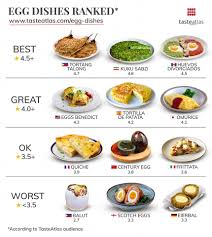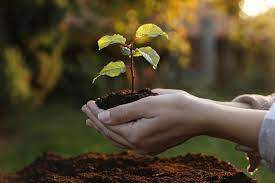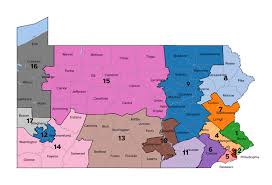The Enchanting World of Wineries
Wineries, often nestled amidst rolling vineyards and picturesque landscapes, offer a sensory journey that transcends mere taste. These establishments are not just places where grapes are turned into wine; they are hubs of culture, history, and craftsmanship.
Visiting a winery is an immersive experience that engages all the senses. The sight of lush vineyards stretching as far as the eye can see, the fragrant aroma of aging barrels, the sound of corks popping in celebration—all come together to create a symphony of sensations.
Each winery has a unique story to tell, reflecting the terroir of its region and the passion of its winemakers. From boutique family-owned vineyards to grand estates with centuries-old cellars, every winery has its own charm and character waiting to be discovered.
Wine tastings at wineries offer a chance to explore a variety of vintages and styles, guided by knowledgeable sommeliers who unravel the complexities of each pour. Whether you prefer bold reds, crisp whites, or sparkling wines, there is something for every palate to savor.
Beyond wine tastings, many wineries host tours that take visitors behind the scenes of the winemaking process. From grape harvesting to fermentation and aging, these tours provide insight into the craftsmanship and dedication that go into creating each bottle.
Wineries also serve as venues for events ranging from intimate weddings to grand galas. The rustic charm of a vineyard setting adds an enchanting touch to any occasion, making it truly memorable for guests.
Exploring wineries allows us to appreciate not just the artistry in a glass of wine but also the rich tapestry of history, culture, and tradition woven into each bottle. So next time you have the opportunity to visit a winery, raise your glass in celebration of this timeless craft that continues to captivate hearts around the world.
“Vineyard vs. Winery: Understanding the Distinctions”
3. “From Vine to Wine: The Timeline of Winemaking at a Winery
- 1. How are grapes harvested at wineries?
- 2. What is the difference between a vineyard and a winery?
- 3. How long does it take for grapes to be turned into wine at a winery?
- 4. What types of wines are typically produced at wineries?
- 5. Do wineries offer tours and tastings to visitors?
- 6. What factors influence the flavor of wines produced by different wineries?
- 7. Are there specific regions known for their wineries and vineyards?
- 8. How can I host an event or celebration at a winery?
1. How are grapes harvested at wineries?
At wineries, the process of grape harvesting is a crucial and labor-intensive task that marks the beginning of the winemaking journey. Typically done by hand to ensure the delicate grapes are handled with care, skilled vineyard workers meticulously select and pick ripe clusters at just the right moment of optimal sugar levels and flavor development. This manual harvesting method allows for selective picking based on grape maturity, ensuring only the best fruit makes its way to the winery for processing. The harvested grapes are then swiftly transported to the winery where they begin their transformation into the exquisite wines that we enjoy.
2. What is the difference between a vineyard and a winery?
A common question that arises when exploring the world of winemaking is the distinction between a vineyard and a winery. Simply put, a vineyard is where grapes are grown, nurtured, and harvested, while a winery is where these grapes are transformed into wine through the process of fermentation, aging, and bottling. Vineyards are sprawling expanses of grapevines that form the foundation of winemaking, dictating the quality and flavor profile of the final product. On the other hand, wineries house the equipment and expertise needed to turn these grapes into the diverse array of wines enjoyed by enthusiasts worldwide. Understanding this difference sheds light on the intricate relationship between nature’s bounty in vineyards and human craftsmanship in wineries that culminate in every bottle of wine.
3. How long does it take for grapes to be turned into wine at a winery?
The process of turning grapes into wine at a winery is a fascinating journey that involves several stages and can vary in duration. Generally, from the moment grapes are harvested to the time the final product is ready for consumption, it can take anywhere from several months to a few years. Factors such as grape variety, winemaking techniques, aging processes, and desired style of wine all play a role in determining the timeline for transforming grapes into that perfect bottle of wine. Patience and precision are key in this artful process that ultimately yields a delightful elixir for wine enthusiasts to savor and enjoy.
4. What types of wines are typically produced at wineries?
Wineries are known for producing a diverse range of wines that cater to various tastes and preferences. From rich and full-bodied reds like Cabernet Sauvignon and Merlot to crisp and refreshing whites such as Chardonnay and Sauvignon Blanc, wineries offer a spectrum of flavors to delight wine enthusiasts. Additionally, many wineries specialize in producing sparkling wines like Champagne or Prosecco, as well as dessert wines like Port or Ice Wine. With each varietal reflecting the unique characteristics of the grapes and the region they are grown in, wineries showcase a bounty of options for every wine lover to explore and enjoy.
5. Do wineries offer tours and tastings to visitors?
For those curious about exploring the world of wineries, the frequently asked question, “Do wineries offer tours and tastings to visitors?” is a common inquiry. Wineries often welcome guests to partake in guided tours that unveil the intricate process of winemaking, from vine to bottle. These tours provide a behind-the-scenes look at the craftsmanship and dedication that goes into producing each vintage. Additionally, many wineries offer tasting experiences where visitors can sample a selection of wines while learning about their unique characteristics from knowledgeable staff or sommeliers. Such tours and tastings not only educate guests on the art of winemaking but also immerse them in the rich culture and history that define each winery’s identity.
6. What factors influence the flavor of wines produced by different wineries?
The flavor profile of wines produced by different wineries is influenced by a myriad of factors that shape the unique characteristics of each bottle. Key elements include the grape varietals used, the specific terroir of the vineyard where the grapes are grown (including soil composition, climate, and elevation), the winemaking techniques employed by the vintner, such as fermentation and aging processes, as well as any oak barrels or other vessels used during maturation. Additionally, factors like grape ripeness at harvest, yeast strains utilized for fermentation, and even the expertise and creativity of the winemaker all play crucial roles in determining the final taste and aroma of a wine. Each winery’s distinct combination of these factors results in a diverse array of flavors that make exploring wines an endlessly fascinating journey.
7. Are there specific regions known for their wineries and vineyards?
Yes, there are indeed specific regions renowned for their wineries and vineyards around the world. From the sun-kissed valleys of Napa and Sonoma in California, known for their world-class Cabernet Sauvignon and Chardonnay, to the rolling hills of Tuscany in Italy, famous for its Sangiovese-based Chianti wines, each region has its own unique terroir that influences the flavors and characteristics of the wines produced there. The picturesque vineyards of Bordeaux in France are celebrated for their exceptional red blends, while the lush landscapes of Marlborough in New Zealand have gained international acclaim for their vibrant Sauvignon Blancs. These regions not only produce outstanding wines but also offer visitors a chance to immerse themselves in the rich traditions and beauty of winemaking.
8. How can I host an event or celebration at a winery?
Planning an event or celebration at a winery is a delightful way to create lasting memories in a unique setting. Most wineries offer event hosting services, allowing you to immerse your guests in the ambiance of vineyards and wine cellars. To host an event at a winery, start by contacting the winery’s events coordinator to discuss your vision, guest count, and desired date. They can help tailor the event to your preferences, whether it’s a wedding, corporate gathering, or special occasion. Many wineries provide various packages that may include wine tastings, catering options, and venue rentals. With their expertise in creating unforgettable experiences, wineries make hosting events effortless and elegant amidst the beauty of wine country.









